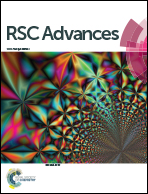Development of a novel drug-eluting stent consisting of an abluminal and luminal coating layer dual therapy system
Abstract
The aim of this study was to develop a dual drug-coated stent using a bi-directional coating system. Sirolimus (SRL) was coated onto the abluminal area of the stent to prevent restenosis, and WKYMVm, a peptide for endothelial homing, was coated onto the luminal area of the stent to enhance endothelialization. To verify the bidirectional coating of materials, various morphological analysis was carried out by using optical microscopy, scanning electron microscopy, and fluorescence microscopy. The release velocities of the drugs coated onto the luminal and abluminal surfaces of the stent were investigated by using instruments that mimic the body’s circulation system. The proliferation of smooth muscle cells was inhibited by SRL, whereas the proliferation of human umbilical vein endothelial cells was enhanced by WKYMVm. This study demonstrated that it is feasible to separate coating layers of the stent strut with new coating technology for the bi-directional function of drugs.


 Please wait while we load your content...
Please wait while we load your content...